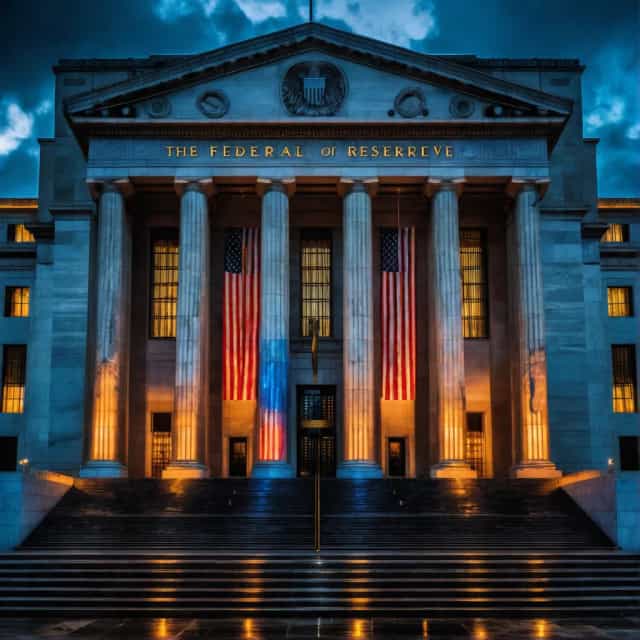
Image source: Block Media
Israel Uncovers $1.5 Billion in Stablecoin Transfers Linked to Iran's Revolutionary Guard: Asset Freezing Challenges and Regulatory Impact
Israel has taken a significant step in combating illicit financial activity by uncovering cryptocurrency wallets allegedly tied to the Iranian Revolutionary Guard Corps (IRGC). These wallets are said to contain transactions worth an estimated $1.5 billion in stablecoins, underscoring the increasing use of digital assets in evading financial sanctions. However, Israeli authorities are encountering substantial hurdles in freezing the identified funds, revealing the limitations of current regulatory and enforcement frameworks.
Unveiling the $1.5 Billion Stablecoin Web
The investigation, spearheaded by Israel's National Bureau for Counter Terror Financing (NBCTF), revealed that approximately $1.5 billion worth of Tether (USDT) had moved through an Iranian-linked network. On October 16, the NBCTF released a public statement outlining these findings and issued warnings to digital asset service providers. Wallet addresses associated with the network—totaling 187—were shared, with clear directives to implement measures aimed at halting further related activities.
In response, Tether, the issuer of the USDT stablecoin, took immediate action by blacklisting 39 wallet addresses. This proactive measure effectively prohibited on-chain transactions through these accounts. Despite these efforts, the success in freezing funds has been minimal, with only around $1.5 million seized. The majority of the funds were moved to alternative wallets and platforms before the sanctions could be fully enforced.
Decentralization Complicates Identity Tracing
One of the most formidable challenges in enforcing sanctions on digital assets lies in the decentralized and pseudonymous design of cryptocurrency wallets. Unlike traditional financial accounts that require verified identities, cryptocurrency can be transacted and held anonymously, making it a nearly perfect medium for evading regulatory oversight.
Blockchain analytics firm Elliptic highlighted the challenges of attribution, noting that many of the flagged wallets might belong to cryptocurrency exchanges or service providers utilized by multiple, unrelated individuals. "It's difficult to definitively associate all the wallet addresses with direct IRGC control," the firm noted, adding that the anonymous nature of blockchain networks further muddies the waters.
This ambiguity underscores the inadequacies of existing digital asset monitoring systems, especially when it comes to identifying individuals or entities behind transactions in real-time.
Regulatory Gaps in Sanctions Enforcement
The investigation revealed critical weaknesses in sanction enforcement mechanisms related to cryptocurrencies. Israeli authorities had reportedly been tracking large-scale Tether inflows over several months. Still, a considerable portion of the transactions were completed before enforcement actions could be implemented, highlighting a lag in interception and enforcement capabilities.
Regulatory experts have pointed to the need for a cohesive, globally-coordinated approach to tackling such issues. They stress that cooperation among cryptocurrency exchanges, wallet providers, and digital asset issuers is essential to curtail sanctioned entities from exploiting decentralized systems. "The situation demonstrates the urgent need for deeper collaboration within the digital asset ecosystem. Without a joint effort, sanctioned actors will continue to manipulate gaps in the system," analysts emphasized.
Looking ahead, experts predict tighter regulations from the United States and European authorities in response to this case and similar ones. Enhanced scrutiny of digital asset transfers and standardized protocols for real-time monitoring of suspicious transactions are expected to become regulatory priorities globally.
Broader Implications for Cryptocurrency Oversight
The discovery of $1.5 billion in stablecoin transfers tied to the IRGC underscores the evolving complexities surrounding financial crimes facilitated by blockchain technology. Decentralized networks provide both opportunities and challenges: while they offer transparency via immutable ledgers, they also enable obfuscation through anonymity and rapid transactions across borders.
This case reveals significant blind spots in the global financial system's ability to monitor, trace, and disrupt illicit cryptocurrency flows. Governments and regulatory bodies are left grappling with questions about how to effectively manage the risks posed by decentralized finance (DeFi) platforms and stablecoins while still encouraging innovation within the sector.
Ultimately, the struggle faced by Israel may serve as a wake-up call to regulators worldwide. The $1.5 billion stablecoin saga brings to light the pressing need for upgraded enforcement tools, cross-border collaboration, and the development of advanced analytics to better identify illicit financial activities without stifling legitimate cryptocurrency use.
Conclusion
Israel's uncovering of a vast stablecoin network linked to Iran's IRGC is a critical milestone in the ongoing effort to curb the misuse of cryptocurrencies by sanctioned entities. However, the difficulties in freezing assets reveal the urgent need for improved coordination and more sophisticated regulatory frameworks. As blockchain networks and digital asset usage continue to expand, policymakers must strike a delicate balance—promoting technological innovation while addressing the vulnerabilities exploited by bad actors on the global stage.










